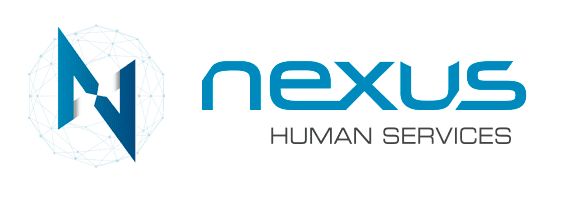Creating a disability-inclusive workplace is not just about meeting legal requirements; it’s about fostering an environment where every individual, regardless of their abilities, feels valued and can thrive. In this guide, we’ll explore practical steps that employers can take to make their workspace more disability-inclusive. From inclusive hiring practices to accessible workplace accommodations, let’s delve into the key strategies that contribute to building an environment where everyone can contribute their best.
Understanding the Need for a Disability-Inclusive Workplace
Before implementing any changes, it’s crucial to understand the importance of a disability-inclusive workplace. Recognise the diverse talents and perspectives that individuals with disabilities bring to the table. Embrace the idea that an inclusive workplace is not just a legal requirement but a foundation for innovation and success.
Inclusive Hiring Practices: Broadening Your Talent Pool
Implementing inclusive hiring practices is the first step towards creating a disability-inclusive workplace. Ensure that your recruitment process is accessible to all by using inclusive language in job postings, providing accessible application processes, and actively seeking candidates with diverse abilities.
Accessible Workplace Accommodations: Tailoring the Environment
Invest in accessible workplace accommodations to ensure that the physical and digital environment is conducive to everyone’s needs, with or without disability. This may include ramps, elevators, accessible restrooms, and technology solutions such as screen readers and adaptive keyboards. Consult with employees to identify specific accommodations that may enhance their productivity.
Diversity and Inclusion in the Workplace: Embracing Differences
Foster a culture of diversity and inclusion within your organisation. Celebrate differences and create an environment where employees feel comfortable expressing their unique perspectives. This not only benefits individuals with disabilities but contributes to a richer and more creative workplace overall.
Employing People with Disabilities: A Commitment to Diversity
Make a conscious effort to actively employ people with disabilities. Seek out talent from diverse backgrounds and abilities, recognising that everyone brings a unique set of skills and experiences to the team. This commitment to diversity is a key aspect of building an inclusive corporate culture.
Creating a Disability-Friendly Work Environment: Beyond Compliance
Go beyond mere compliance with disability-friendly workplace practices. Design workspaces with accessibility in mind, ensuring that employees can navigate the office, collaborate effectively, and access resources without barriers. This may involve adjusting desk heights, providing ergonomic furniture, and creating quiet spaces for focus.
Accessible Job Opportunities: Paving the Way for Inclusion
Make job opportunities accessible to everyone. Provide clear information about job requirements, responsibilities, and application procedures. Consider offering flexible work arrangements and remote options, which can be particularly beneficial for individuals with certain disabilities.
Disability Employment Strategies: Developing a Comprehensive Plan
Develop a comprehensive strategy for disability employment. This may include setting specific hiring goals, establishing mentorship programs, and offering training sessions on disability awareness for all employees. A well-thought-out strategy can guide your organisation towards a more inclusive future.
Promoting Diversity in the Workplace: From Intent to Action
Actively promote diversity and inclusion initiatives within your organisation. Showcase success stories of employees with disabilities, organise awareness events, and collaborate with disability-focused organisations to amplify your impact. The more visible your commitment to diversity, the more attractive your workplace becomes to a diverse talent pool.
Inclusive Recruitment Practices: Removing Barriers
Evaluate and adjust your recruitment practices to remove barriers that may deter individuals with disabilities from applying. This includes ensuring that your website is accessible, providing alternative formats for application materials, and offering flexibility in the interview process.
Supporting Employees with Disabilities: Providing Ongoing Assistance
Once employees with disabilities are onboard, it’s essential to provide continuous support. Foster an open line of communication to understand individual needs and challenges. Implement mentorship programs or employee resource groups that create a supportive community within the workplace. Regularly assess and update support systems to ensure they align with the evolving needs of your diverse workforce.
Inclusive Workplace Technology: Embracing Digital Accessibility
Embrace technology that enhances digital accessibility within the workplace. Ensure that all company software and communication tools are compatible with assistive technologies. Regularly update and educate employees on the available assistive tools, fostering a tech-friendly environment where everyone can leverage digital resources effectively.
Building an Inclusive Corporate Culture: Leading by Example
Leadership plays a pivotal role in shaping corporate culture. Demonstrate a commitment to inclusivity from the top down. Encourage leaders to actively champion diversity, advocate for inclusive policies, and ensure that inclusivity is embedded in the company’s core values.
Disability Employment Resources: Utilising External Support
Explore external disability employment resources to enhance your initiatives. Collaborate with disability-focused organisations, government programs, and community services to tap into valuable resources and insights. These partnerships can provide additional support, guidance, and access to a wider network of talent.
Building a disability-inclusive workplace requires a holistic approach that goes beyond compliance. It involves a commitment to diversity, the implementation of inclusive practices, and the creation of an environment where every employee can contribute and thrive. By embracing inclusive hiring practices, providing accessible accommodations, and fostering a culture of diversity and inclusion, employers can create a workplace where everyone feels valued and empowered to excel. As you embark on this journey, remember that building an inclusive workplace is an ongoing commitment that pays off in innovation, creativity, and overall success.
If you’re a Job Seeker or Employer looking to engage inclusive recruitment or job search tactics, give us a call on 1800 163 987, or visit our social media pages to see how else we can help you.



